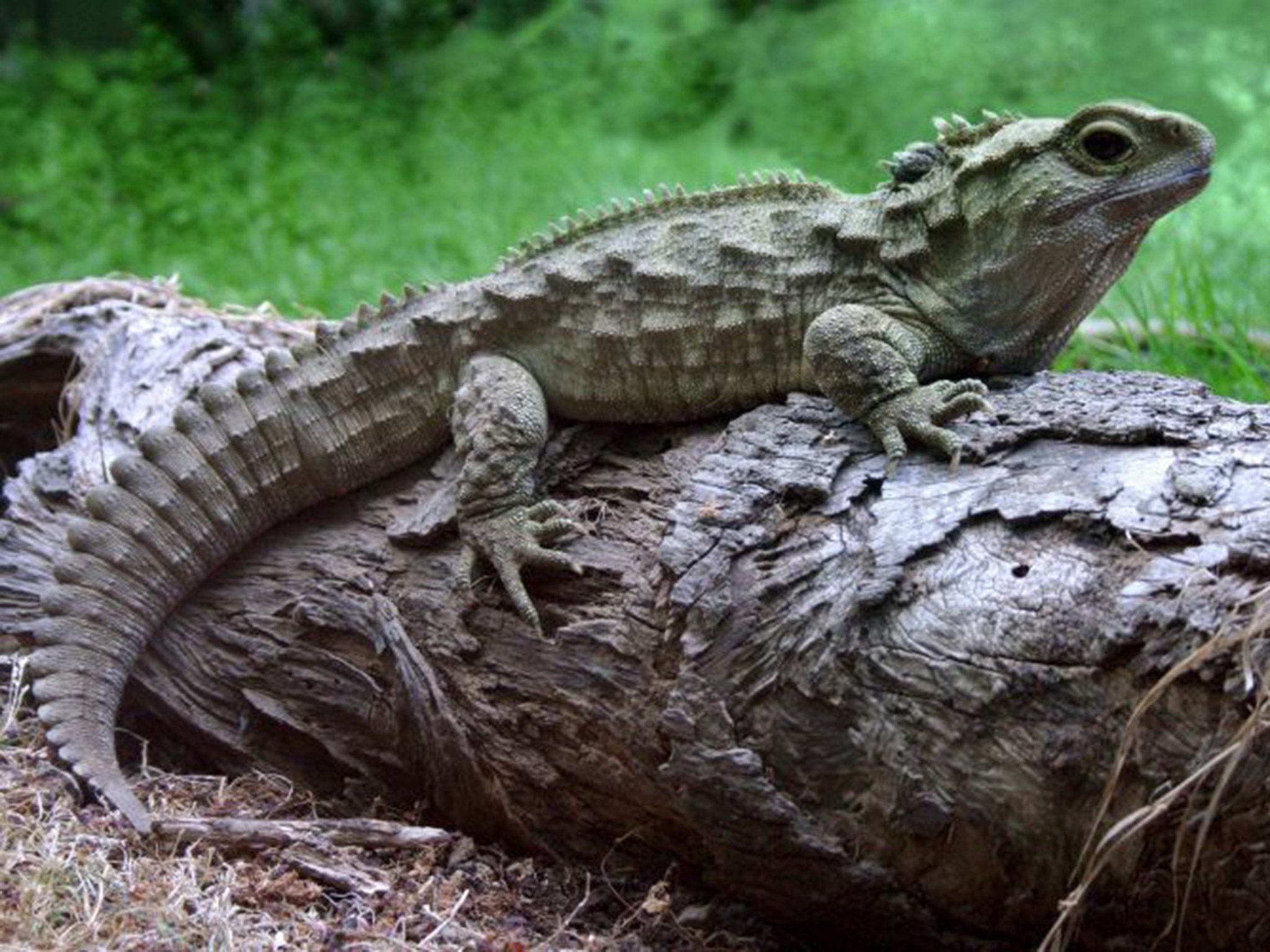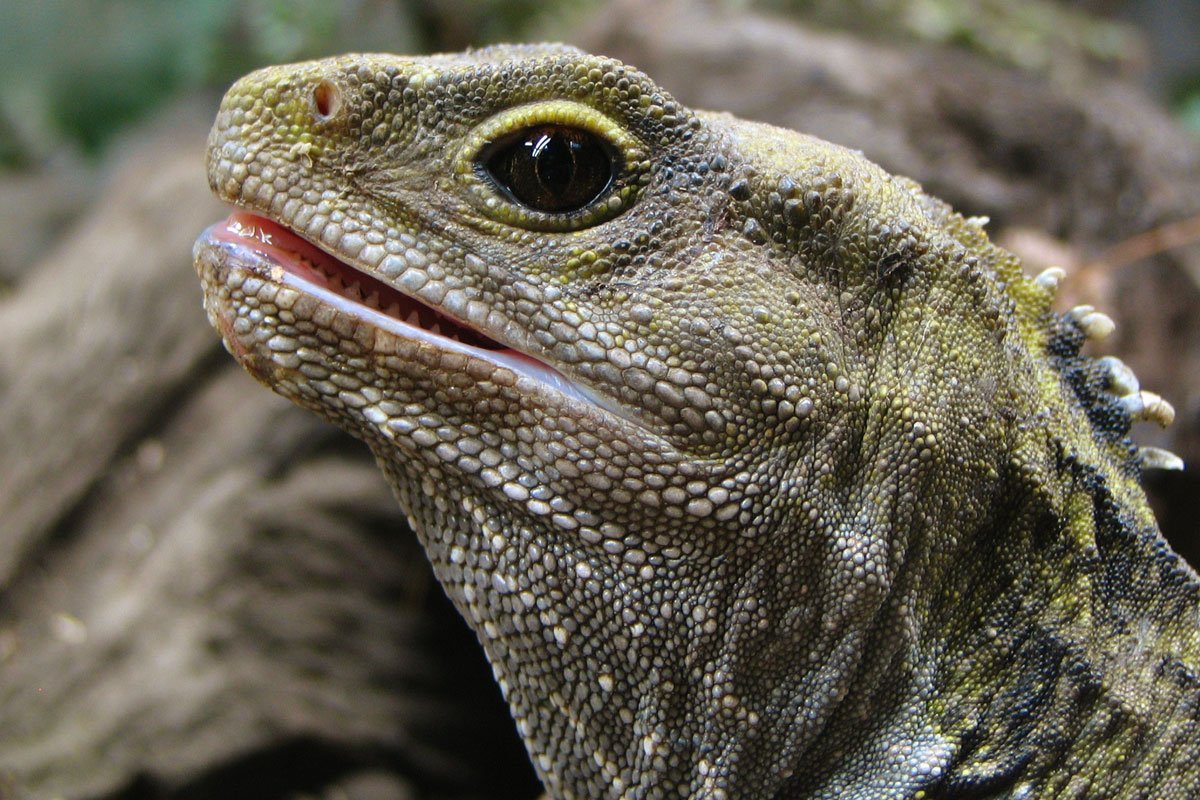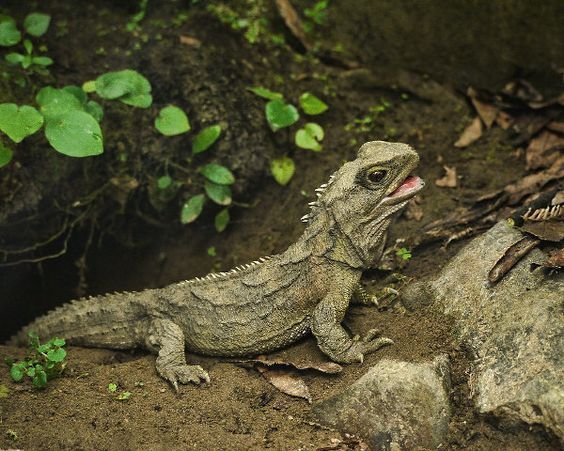Herpetologists study the six major branches of reptiles: crocodilians, turtles/tortoises, snakes, lizards, amphisbaenians (more on them in the future), and tuatara. Tuatara are a largely unknown group of reptiles due to the fact that they only exist in New Zealand, and only two species still exist today. And, truthfully, they are one of my favorites because they look like little dragons.
But wait! That just looks like a lizard! While tuatara do resemble modern lizards (and are often mislabled as such), they actually represent an entirely different order of animals. Today's remaining tuatara are "living fossils", and are the only surviving members of the order Rhynchocephalia, a lineage that flourished about 200 million years ago. While they are closely related to lizards and snakes, tuatara are actually more primitive, and answer many questions about the evolution of modern reptiles.
So how do tuatara differ from the lizards? Well, to tell most groups of reptiles apart, we look at their skulls, specifically, the openings in the sides of the skulls. Tuatara (and lizards/snakes) are diapsids, meaning that they have two holes in each side of the skull. Snakes' and lizards' skulls have developed such that the lower temporal bar (the bony ridge along the bottom of the lower opening, labeled as "9" in the photo below) is lost, allowing for greater motion within the skull (this explains how snakes' skulls can basically "come apart", allowing them to swallow prey larger than their heads). Tuatara skulls have less range of motion, and are a precursor to the advanced form of lizard skulls. (Source)
SourceLizards also have more advanced reproductive organs, called hemipenes, a pair of copulatory organs found in males. Tuatara do have these same organs, but they are far more primitive in form.
Tuatara are highly valuable to evolution studies of lizards and snakes, but they also allow for the study of appearance and habits of the earliest known diapsids. Rhynchocephalia was one of the earliest known diapsids, and we are incredibly fortunate to have a serviving member of that order still alive today. Amniote tetrapods, a group that includes dinosaurs, birds and crocodilians, can be better understand by observing the behaviors of these remaining tuatara, serving as a "missing link" in the development of modern day reptiles and birds.
Once found widespread in New Zealand (based on fossil evidence), tuatara had been driven from the main islands even before the settlement of Europeans. They were established on 32 off-shore islands; islands that were completely free of mammals (evidence suggests that some animal likely forced the tuatara to these remote islands) where they thrived for sometime. Unfortunately, with settlers came the introduction of Polynesian rats, which quickly infested the islands of New Zealand. On the islands with rats, the remaining tuatara persisted, but were not breeding, and the tuatara quickly became rare. Between 1990 and 1991, tuatara were taken into captive breeding programs while the Polynesian rats were eradicated on those islands, in a desperate attempt to undo the environmental damage caused by the invasive species. Shortly after the elimination of the rats, conservationists began reintroduction programs, returning the captive bred tuatara to their native islands. Tuatara populations are slowly recovering on these islands, with new juveniles still being released today; their current population is estimated to be between 60,000 and 100,000 individuals.
There is promising hope for the tuatara yet. Their recovery on islands purged of rats has suggested that we will be able to protect the species if we act with vigilance. The tuatara represents in important opportunity to study incredibly ancient life that has persisted on remote islands for millions of years. They are living proof of evolution, and with our conservation efforts, should be around for a long time to come.








